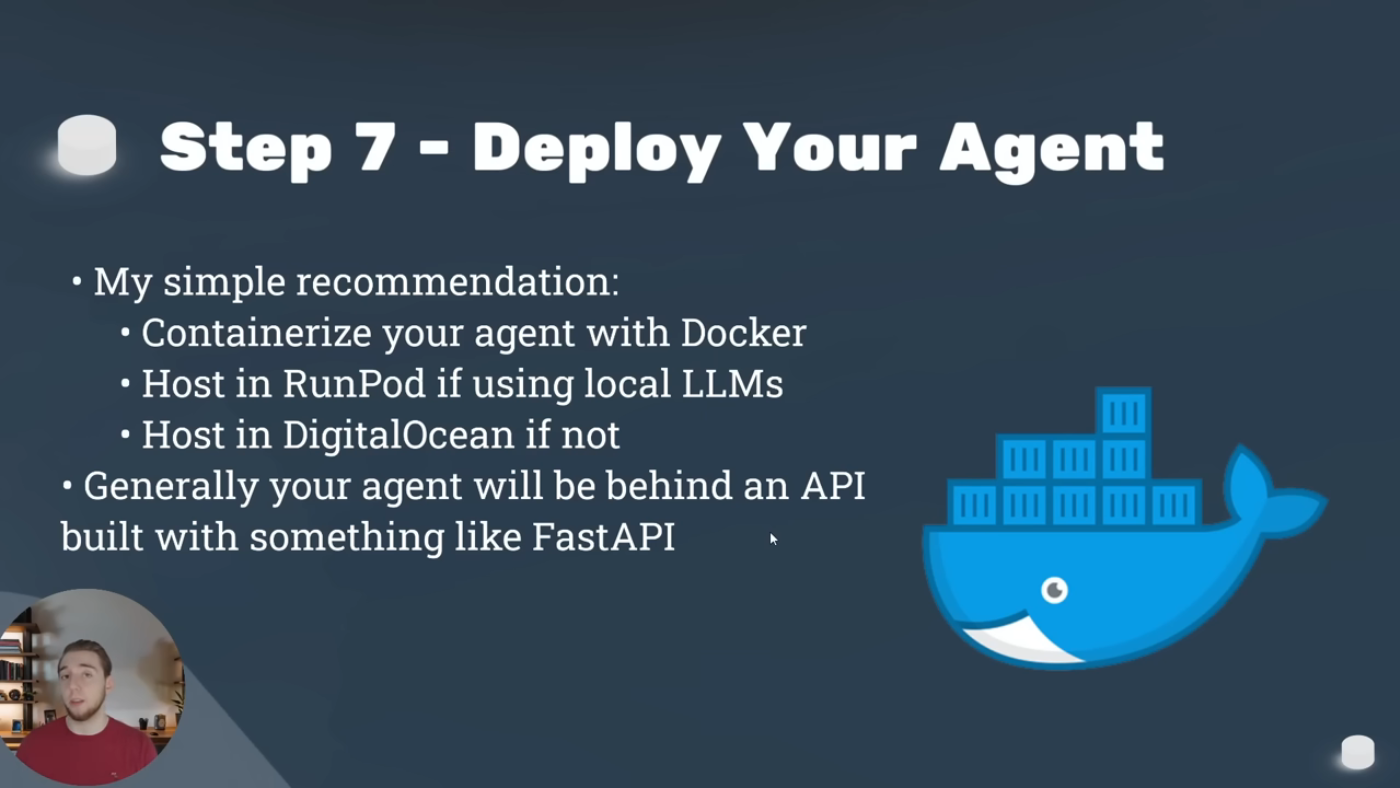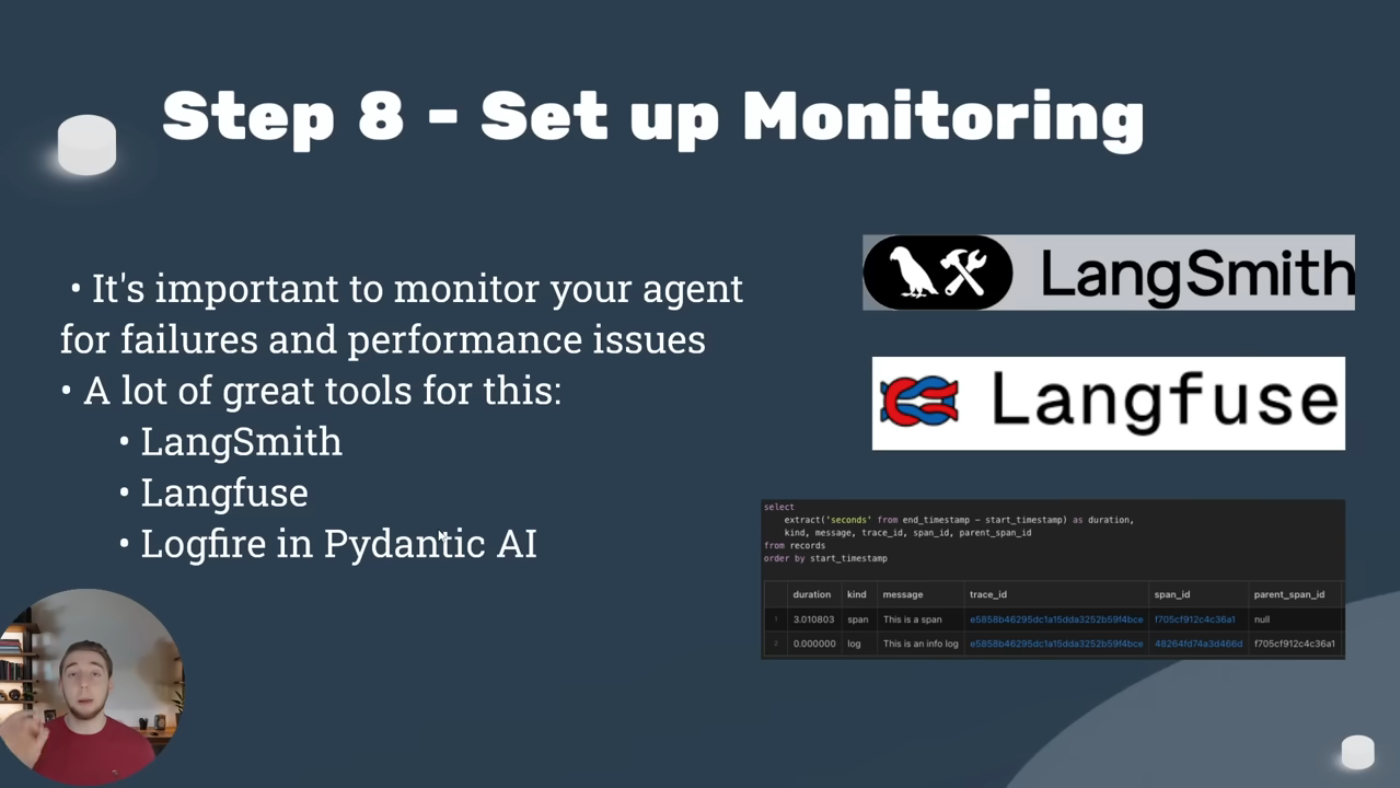Building AI Agents: A Step-by-Step Guide
In this article, we will delve into the process of building AI agents, exploring the entire journey from planning to deployment. The creator of the content will walk us through their process, sharing their expertise and insights on how to create powerful AI agents.
Introduction to the New Mini Series
The author starts by introducing a new mini-series focused on building AI agents. This series aims to take the audience through the entire process of creating an AI agent, from the basics to production.
 Introduction to the new mini series on building AI agents
Introduction to the new mini series on building AI agents
AI Agent Development Overview
The author explains that they get asked a lot about their process for building AI agents, and this series is a response to those questions. They will be sharing their entire process, step by step, to help the audience build their own AI agents.
 Overview of the AI agent development process
Overview of the AI agent development process
Step 1 - Plan the Agent
The first step in building an AI agent is to plan the agent. This involves defining the agent's purpose, identifying the tasks it will perform, and determining the resources required. The author will be sharing their approach to planning an AI agent, including how to define the agent's goals and objectives.
Step 2 - Agent Prototype
The next step is to create a prototype of the agent. This involves designing the agent's architecture and testing its functionality. The author will be using n8n and Gemini 2.0 Flash to build a full prototype of their agent.
Step 3 - Database
The third step is to set up a database for the agent. This involves deciding on the type of database to use and designing the database schema.
 Setting up a database for the AI agent
Setting up a database for the AI agent
Step 4 - Moving to Python
The fourth step is to move the agent to Python. This involves translating the agent's code into Python and testing its functionality. The author will be sharing their approach to moving the agent to Python, including how to handle any challenges that may arise.
Step 5 - Agent UI
The fifth step is to create a user interface for the agent. This involves designing the UI and testing its usability.
 Creating a user interface for the AI agent
Creating a user interface for the AI agent
Step 6 - Testing the Agent
The sixth step is to test the agent. This involves testing the agent's functionality and performance. The author will be sharing their approach to testing the agent, including how to identify and fix any bugs.
Step 7 - Deploying the Agent
The seventh step is to deploy the agent. This involves setting up the agent on a server and configuring it for use.
 Deploying the AI agent
Deploying the AI agent
Step 8 - Agent Monitoring
The eighth step is to monitor the agent. This involves tracking the agent's performance and identifying any issues. The author will be sharing their approach to monitoring the agent, including how to use metrics and logging.
Step 9 - Agent Evaluation
The ninth step is to evaluate the agent. This involves assessing the agent's performance and determining whether it meets the desired goals.
 Evaluating the AI agent
Evaluating the AI agent
Step 10 - Advanced Agent Topics
The tenth and final step is to explore advanced topics related to the agent. This includes using the agent with other tools and technologies.
 Exploring advanced topics related to the AI agent
Exploring advanced topics related to the AI agent
Conclusion
In conclusion, building an AI agent involves several steps, from planning to deployment. By following these steps and using the right tools and technologies, it is possible to create a powerful AI agent that meets your needs.
 Conclusion and final thoughts on building AI agents
Conclusion and final thoughts on building AI agents
